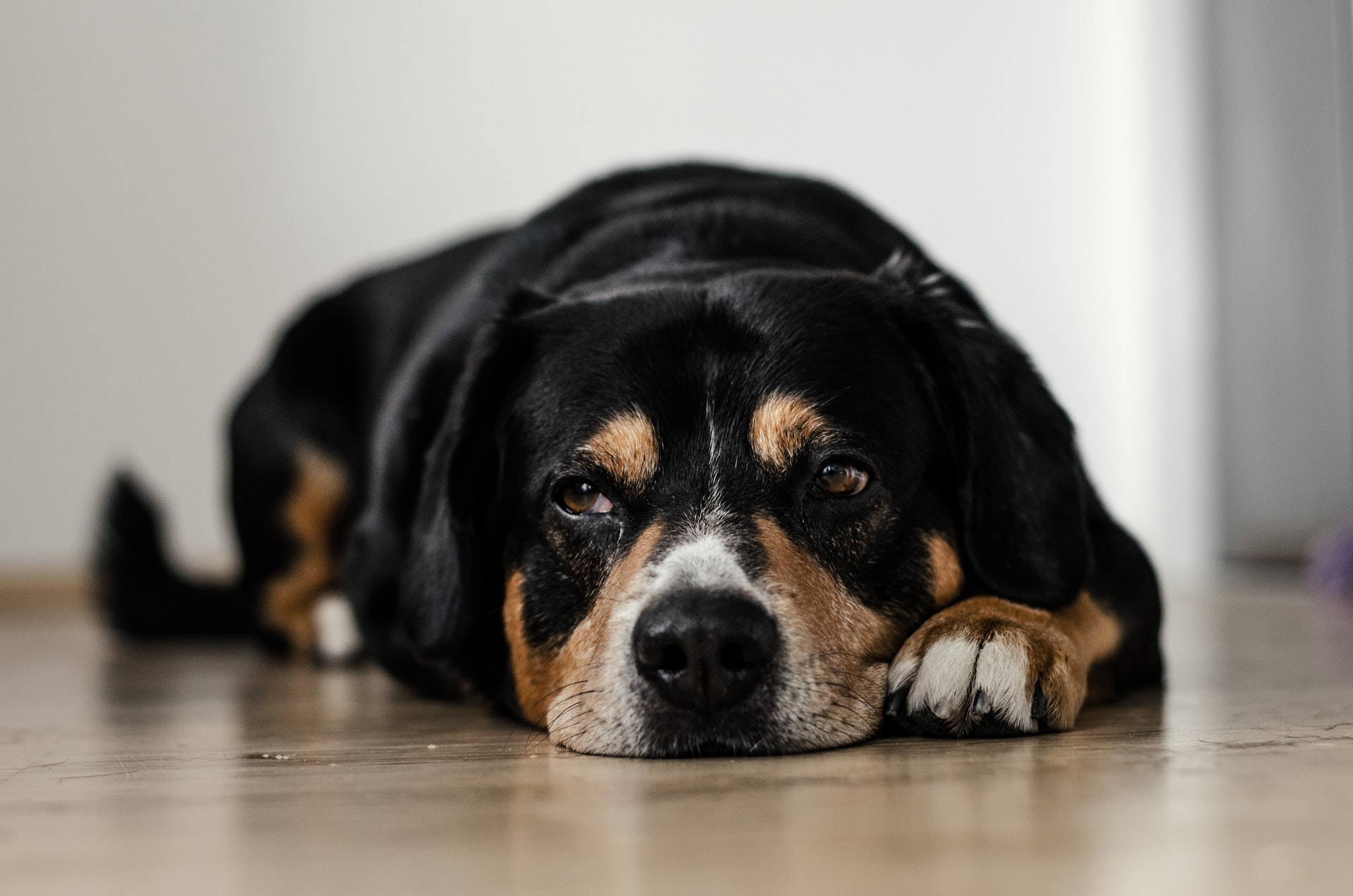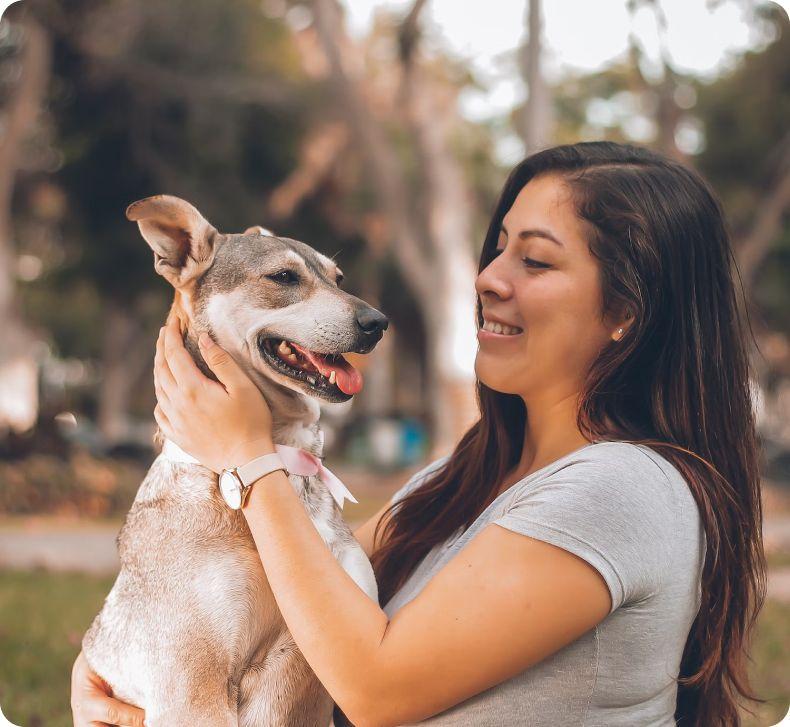A cancer diagnosis that can knock anyone off their feet. It’s when some cells in the body go rogue, spreading to other parts and causing trouble. Sadly, even our beloved pooches are not immune to this disease. The exact cause of cancer in dogs is still a mystery, but some blame it on bad genes.
Paws down, cancer is no walk in the park, especially for our furry best friends. As a dog-lover, it’s important to stay ahead of the game and protect your pup from this life-threatening disease. In this blog, we’ll take a walk on the bright side and learn about the different types of canine cancer. From lumps to bleeding, we’ll cover the most common symptoms of cancer in dogs and the sneaky ways cancer can enter a dog’s body. Get ready to join the fight against canine cancer to keep your pup healthy and happy!
Cancer in Dogs: Types, Symptoms, Diagnosis & Treatment
1. Lymphoma
With over 30 different types, lymphoma is the most common when it comes to canine cancers. It targets the lymph nodes in your pup’s neck, chest, armpits, groyne, and knees. These nodes are like the bodyguards for your pup, keeping them safe from harm.
Symptoms: Lymphoma can be tough to spot because it affects different parts of the body, but some signs to watch for include weight loss and feeling a little down in the dumps. If you spot any lumps near your pup’s lymph nodes, it’s time to call the vet. Unfortunately, lymphoma can hide in plain sight and take a toll on your dog’s health.
Treatment: The good news is, vets have treatments like biopsy and chemotherapy to help. In more advanced cases, surgery or radiation therapy may also be necessary.
2. Osteosarcoma
Bone cancer in dogs is also known as osteosarcoma. This aggressive type of cancer takes down bones, especially in larger breeds. The big bones like the leg bones are the most common targets, but it can also hit bones like the jaw, hips, and pelvis. And if it’s not caught in time, it could spread to other parts of the body. The cause of this cancer is a mystery, but some experts think it may be due to certain genes.
Symptoms: Seeing your furry friend struggle with bone cancer is a heart-wrenching experience. Symptoms of cancer in dogs include signs like lameness, swelling, and difficulty walking. Loss of appetite and drowsiness can also indicate something’s up.
Treatment: To treat this cancer, the vet will need to know the stage of the cancer, which can be determined through a physical exam, biopsy, and X-rays. Then, surgery or chemotherapy may be recommended based on the situation.
3. Mammary cancer
Common in female dogs, mammary cancer can affect the tissue under the pups’ breasts. These cancerous masses can vary in size and shape, and they may affect one or more tissues. The root cause of mammary cancer is often attributed to the growth hormone progesterone, which causes the breast tissue to replicate. Unfortunately, unspayed dogs are the most susceptible. Spaying your furry friend before her first heat can significantly reduce her chances of developing mammary cancer.
Symptoms: Often times, the masses go unnoticed until they’ve reached advanced stages, but regular check-ups and spotting any bleeding can help catch them early. If you spot any firm masses developing near the skin opening or under the belly, it’s time to head to the vet.
Treatment: Diagnosis usually starts with a biopsy to get a sample and determine the exact tissue type. Depending on the cell type, the vet might suggest additional tests like X-rays and urine analysis. A dog cancer treatment plan will depend on the stage and type of cancer, with surgery being the first step in early stages and chemotherapy is recommended for advanced cases.
4. Hemangiosarcoma
This blood vessel-lined cancer is both common and dangerous in our furry friends. It can strike anywhere and spread to other parts of the body before we even know it’s there. Sadly, even with treatment, it can be a fatal cancer, with only a rare chance of survival for over a year. Dogs over the age of 8 are most susceptible.
Symptoms: The signs of cancer in dogs can vary based on the affected organ, but some common ones include loss of blood, weakness, coughing, and vomiting. Skin, spleen, liver, and heart are the most common sites for this sneaky cancer.
Treatment: The road to recovery starts with staging, where the vet looks at the dog’s medical history and symptoms to determine the best course of action. From there, it may involve a combination of blood tests, x-rays, CT scans, and ultrasounds, depending on the affected organ. Yet there are treatments available, such as radiotherapy and chemotherapy for dogs, which can slow down the growth of cancer cells and extend our pet’s lifespan.
Coping with Canine Cancer: Tips on How to Care for a Dog with Cancer
With these tips, you’ll be able to give your furry buddy all the love, care, and support they need while they brave this journey. Remember, cancer can be tiring and draining for dogs, but with proper care and love, they can still live a happy and comfortable life.
1. Ensure a Positive Attitude
Your dog can sense your energy, so try to keep things positive and upbeat. This can help boost their morale and keep them motivated.
2. Keep a Normal Routine
Try to stick to your dog’s normal routine as much as possible. This will help them feel secure and at ease.
3. Exercise
Exercise is a great way to keep your dog’s spirits up and maintain their strength.
4. Give them Comfort
During treatments and recovery, make sure your dog is comfortable. A soft bed, plenty of cuddles, and a calm environment can go a long way in helping them feel at ease.
5. Consult with a Specialist
Work closely with a veterinary specialist to determine the best course of action for your dog’s specific cancer diagnosis.
6. Provide Nutritious Meals
A healthy diet can help keep your dog’s immune system strong and support their recovery.
7. Stay Informed
Stay informed about your dog’s condition and treatment options, this can help you make informed decisions about their care.
8. Surround Yourself with Support
Talking to other dog owners who have gone through a similar experience can be a great source of comfort and support.
6 Tips on How to Detect Cancer Early
- Schedule regular checkups with your veterinarian to keep your pet healthy and catch any potential problems early on.
- Check your pet regularly for any lumps or bumps on their skin and have them evaluated by a veterinarian if you find anything suspicious.
- If your pet is acting differently or showing signs of discomfort, it could be an indication of a health issue. So, look out for changes in their behaviour.
- Watch for any abnormal discharge from the eyes, nose, or ears, which could indicate a problem.
- Sudden and unexplained weight loss is a common symptom of cancer in pets and should be evaluated by a veterinarian.
- If your pet is experiencing pain or discomfort, it’s important to have them evaluated as soon as possible.
In conclusion, cancer in dogs is a serious matter but it’s important to remember that with early detection and proper treatment, our furry dogs can still lead healthy lives. So, keep an eye out for any unusual signs or symptoms and don’t hesitate to take your pup to the vet if you suspect anything. Remember, a wag of the tail is worth a thousand words, so let’s do our best to keep those tails wagging!






